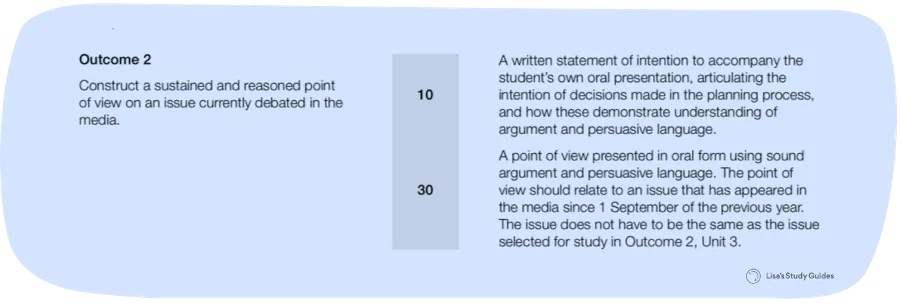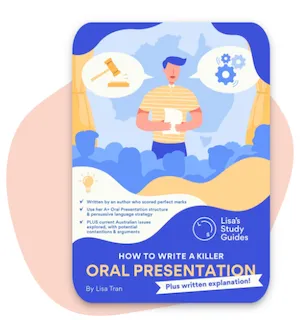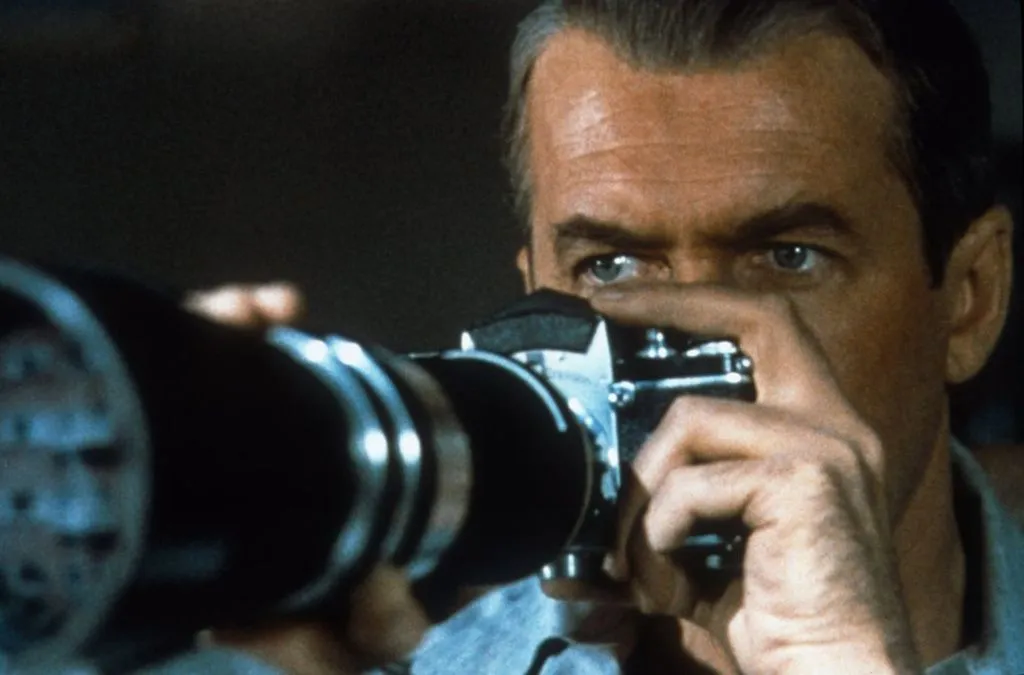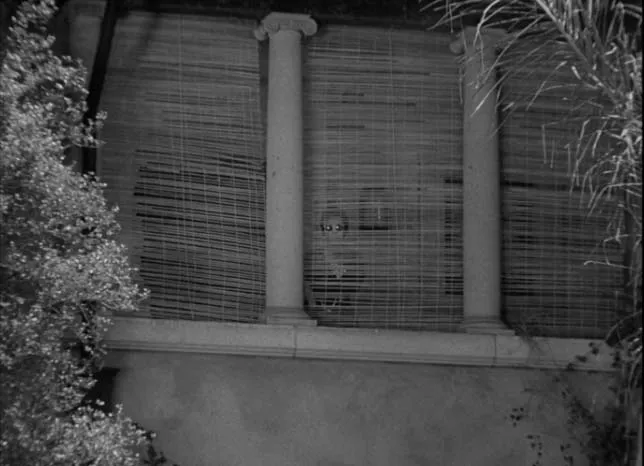For a detailed guide on Language Analysis, what you're expected to cover, how to prepare for your SAC and Exam and more, check out our Ultimate Guide to VCE Language Analysis.
[Modified Video Transcription]
Analyse the VCAA 2020 Article With Me
I'm so excited to be doing the VCAA 2020 English Exam with you. I have done these Analysing Argument pieces before on YouTube, but this is the first time that I'm doing one live. I wanted to do one live with you guys because I wanted to interact with you, for you to be able to ask me questions and for you to see how my brain works in a live setting. When it comes to analysing - and you know I've got an edited version for you - you don't see me thinking through and understanding what's happening in the article itself. So, I think it will be really handy for you to see my thought processes because sometimes, yeah, you can see somebody's analysis, but if you don't quite understand HOW they arrived at that analysis, then it's not that helpful for you. It's like reading an essay that's already been done by an A+ student and you go, yeah, okay, I kind of get that, but how did they get there? How did they find that language technique to begin with? How did they find that argument? So that's what I want to work with you guys today.
You can download VCAA 2020 English past exam HERE, which is what we're going through today. If you've already read it before, even if you've done it before, I'm confident I'll still be able to give you some new, interesting perspectives and to pick out some new language techniques for you guys. So, go ahead and make sure you download that and print it out. I think printing things out is usually a better option than trying to annotate online, unless you've got an iPad or equivalent. The exam is absolutely free - it's the last few pages of the exam, starting at page 11.
Let's just get into it. I don't think I have any other housekeeping pointers except that throughout this live stream, I'm going to direct you to where you can actually go and get the A+ completed essay I've got for this article. While we're going to be analysing this together now, I think it's handy for you to be able to see an A+ completed version of everything that we've talked about. Then you can take it from the very beginning (the analysis), then the annotations and then you can finally see the written-up version. Being able to take you through that entire process from start to finish is going to be so wholesome, so fabulous.
Pay Attention to the Background Information
Whenever you look at section C, which is Analysing Argument also called Language Analysis (I'm going to interchange these two terms), you really need to ensure that you read the background information. I know it's super obvious, but background information is there for a reason, do not skip over it!
They didn't just give you an entire extra page just for the sake of it. Usually, the background information is a really great place for you to understand conceptually what is going on in this article. If we didn't have this background and therefore context to the article, there's a chance that you might accidentally come up with the wrong contention. You might misinterpret the arguments as something else. The background information is really just there for backup. It's a great place for you to ensure that what you're understanding from the article is actually correct because usually the background information is filled with facts and these facts will help shape your understanding of the article.
Let’s Read the Background Information Together
‘The shire of Byways in regional Victoria depends on both farmers and tourists for its prosperity. The local community is concerned about the increased recreational use of drones by many of the tourists visiting the area. The following is the transcript of a speech’
Ah! Interesting - 'transcript of a speech' is something that makes me go already yep, I need to make sure I note this because as soon as I recognise that it's a speech, it means that my audience, I don't call them readers, I call them listeners.
Simple things, small things will help differentiate you from other students. Someone else might not pick up that this is a speech and they'll just say readers the entire time. And no, you're not really going to get marks deducted for it, but there's an element of finesse I suppose. If you just notice that small nuance and you're able to present that in your essay, it makes the examiner or assessor more confident that you know what you're doing.
'by young farmer Warwick Bandle at a public meeting'
Interesting, ‘public meeting’.
'called by the Byways Shire Council to discuss the community’s concerns.'
It's interesting because I'm already getting this community vibe from this background information. The fact that it's regional Victoria, the fact that it's actually a very specific council, the fact that he's at a public meeting. People have taken time out of their day to go to the council meeting. Who goes to the council meeting? People who care. This is just something that I'm kind of noting for myself as I go into my analysis because then I'll be able to develop my analysis in a particular way.
'Bandle provided two images to be projected on a screen to accompany his speech.'
Okay, cool, all this does is tell me that I just need to be wary that there are two images and that I, as a student, need to talk about them.
Analysing Paragraph One
He says, 'Good evening, everyone', already indicative of a speech, I'm just going to write that down. Remember that it's a speech!
'Drones and their inexperienced users are proving to be a costly problem for us farmers. Drones are not toys. What happens when a drone flies out of range? What happens when the battery runs out? A drone being flown out of control, or crashing out of the sky, can be lethal.'
Wow. Okay, this is what I think when I read an article, I genuinely think about my own personal response. I mean, I am actually the audience of this article. No, I'm not there at the council listening to him live, but I'm still a person who's absorbing what he's saying. I trust my instinct and my gut feeling, and that kind of leads me to develop my own unique interpretations. The reason why I said 'Wow' is because he uses the word 'lethal'. To me, it's a little bit of an exaggeration. I mean I'm sure drones have killed people before, but I guess it's like an I'm serious about this, we're not joking around and he's making it seem like this is a serious problem and that we need to address it seriously. So in that sense, I guess we could talk a little bit about tone. What tone do you think he's using?
Tones
Viewers from our live stream suggested:
- Serious
- Alarmist
- Aggressive
- Concerning
- Urgent
- Shocking
Nice! I like all of these. I don't think there's anything wrong with them. When it comes to English, it's a matter of your own interpretation. As long as you can back it up, then you've got yourself straight. You can go and find my 195 Tones PDF, which you can download for free. You can use that whenever you analyse an article, it has a bunch of tones listed there for you so that you never run out of tones!
He's already set this tone for the remainder of the article. I'm interested in what he's going to say next. Otherwise, I think the fact that he's serious or alarmist is reaffirmed by what he's saying. He says, 'drones are not toys'. Okay. This is not a game, we're not playing around, we're not fooling around. And I suppose that's important for him to establish because drones are kind of seen as toys, at least for me anyway. When drones first came out, it was kind of like a toy aeroplane that you drive around with your remote control. So, I think he's dispelling that idea or that conception or perception of drones immediately so that we can be on board with whatever he's saying next.
LSG’s Specificity and Simplicity Strategy
I just wanted to point out, this is pretty obvious, but rhetorical questions. There's not necessarily much I would say at this point in time with rhetorical questions, and that's because of my SPECIFICITY and SIMPLICITY strategy. If you don't know much about that - I haven't talked much about it on my YouTube channel - it's a strategy that I developed for myself in Year 12 when I couldn't figure out why I wasn't getting full marks in English and yeah, okay, I was a nerd, I was already getting 17 or 18 out of 20, but you know, the high achiever in me was kind of like, why am I not getting 19 out of 20? Why am I not getting 20 out of 20? Why am I losing these one or two marks?
I realised later on that it's because I wasn't being SPECIFIC enough with my analysis. So, when it comes to some of the comments (referring to comments from live stream) you guys have written, one of you wrote down 'emotive language'. If you're one of my students, you know that you don't use emotive language. Emotive language is way too broad. It's way too general to really mean anything. Instead of saying emotive language, why don't you say exactly what emotion they're appealing to. You're then taking that general vagueness of whatever emotive language means and replacing it with something very specific, and therefore, it's going to be more meaningful for you to write about, but also for your assessor to understand what you're going on about.
So in case you don't know, I have study guides (it is called Lisa's Study Guides after all). In How To Write A Killer Language Analysis I actually go through this golden strategy of SIMPLICITY and SPECIFICITY. This is what helped me get an A+ in my Analysing Argument and in my end of year exam. If you're interested, then I'd highly recommend that you go and check out the study guide. It's a world of value I promise.
More Analysis of Paragraph One
We're still only on the introduction, which is crazy, there's just so much to say when it comes to this stuff.
‘Just imagine the damage that can be done by a falling drone. Imagine, then, these drone users, realising that they have lost their drone, searching, crashing through crops, or leaving gates open and letting livestock out. And finally, when they don’t find the drone, it’s just left to rust away in the field until harvest time, when it’s swept up, damaging the harvester.’
I guess there's this idea of 'imagine'. He's building upon that alarmist attitude, which I'll pull from what you guys are saying, and by asking us to 'imagine' the worst-case scenario, it's making us feel more and more concerned, right? Just by reading this, I go ew, I don't want these drone users to be losing their drones in my farm space, in my land.
One other point for you to think about is, I was talking before about how I am part of the audience too, right? But the next step from that, for a more advanced analysis, is to think about who is HE talking to? If we go back to the prior page, he's at a public meeting to address the community's concerns. You could say that part of the audience would be farmers, people who care about their livestock, people who care about the invasion of privacy and people stepping on their property. Remember this as you analyse, because it's going to make your analysis way more specific, and bonus tip, assessors, teachers, examiners - they love it when you can be specific with who the audience is. It shows that you're capable and you get it.
Even just in this first paragraph, we've managed to talk about quite a bit.
Let's Look at Your Questions:
- I think my target audience is probably farmers. I say probably just because I want to keep reading to understand exactly who he's talking about, these are just my assumptions, just from reading the first part of the article.
- In terms of how you can incorporate tone into a body paragraph, you can do it as simple as actually just talking about the tone or you can integrate it with another language technique. Remember just before we were talking about rhetorical questions and how the repetitive use of 'imagine' kind of builds upon that sense of concern in the audience? You could link that back to his tone and say, 'By building up this concern, he's using his serious tone in order to persuade the audience to...'.
Analysing the Photograph
You absolutely need to talk about it. We've got this photograph of this girl who seems to be a bit of a dark shadow and because she's a dark shadow I'd say that it's like she is an anonymous person. The sense is that this could be anyone and by making the person anonymous, like a blank face, it's easier for us to hate on them because it kind of takes the humanity away. If you don't know who it is, they're just drone invaders. They're people who don't respect our land. That's one point that I would talk about.
Then you've got that really focused point of view of the drone itself. It makes sense because the drone is the topic of this conversation, so it's the focal point you could say, and it reconfirms or reaffirms that idea of it just crashing out of the sky, crashing through crops or being left to rust away. Remember, imagine that we're in the council meeting, he's put this image up for us and he's saying this. I think about it as how does having the photograph there on a presenter with him talking about it, how does that change how I respond? I think about how I feel and what I think, which is something that we talked about in one of my previous videos, called How to write a Language Analysis (Analysing Argument) - we talk about the TEE rule. In my opinion, when I have that photograph right there in front of me, it definitely makes me angrier. It's more confronting because it's in your face and it definitely riles me up more. So, you could include that in your analysis as well.
Pay Attention to the Structure of Articles/Arguments
The way that he has structured his argument, in the sense that he's structured where he positions his photograph (which is basically right after his introduction), makes me feel more inclined to agree with him. Whereas, if it was just him saying it (without an image as proof), then I'd actually have to just take his word for it. But, here's proof people are doing this!
A viewer says ‘she's dressed for the city and outside of, not part of the community’ - I love it, well done!
Another viewer says ‘the camera angle gives the allusion that she's dominant’ - interesting.
I think to extrapolate what you're saying, that dominance, as somebody who's part of the local community, I don't want that. I don't want somebody else to be dominating over my crib, my place! So it's kind of making me really deterred and making me want to steer clear. It makes me want these people to steer clear of my space.
A viewer says ‘the lack of crop suggests that drones have destroyed the normal way of farming’ - yeah, absolutely! Not only is there rubbish in their plot of land, but if anything, the drone has added to the destruction.
She's dominant, therefore she's a threat.
A viewer says ‘she believes that the black and white makes it gloomy and sad’ - a hundred percent. This is actually a really good point. Sometimes you can get so absorbed in the analysis that you only think about what's there in front of you, but a great way to create contrast and to understand what's there when it's so obvious is by considering what things would be like if it were otherwise. Basically, what I'm saying is, think about why it is black and white. Why is it not in colour? If it was in colour, how would that change your perception of what's happening here? Thinking about what's NOT there helps you understand what IS there.
You can talk about how it's good versus evil.
I wanted to just share with you guys because I won't be able to go through all of this today, but I did mention before that I do want to show you the A+ sample essay. It's in my How To Write A Killer Language Analysis study guide in Chapter 16, Section 10. We've actually recently updated it with the 2020, 2019 & 2017 past English Exams, so it's all A+ essays for you. Plus we have several A+ essays for single articles, double articles and triple articles with images as well.
We've talked a little bit about the photograph, which by the way, we could keep finding more and more, but I think it gets to a certain point where you kind of have to figure out what's valuable for you to talk about and what's not so much. Once you get good enough at Analysing Argument, you should have an excess of language techniques to choose from and then it's just a matter of deciding which ones are going to give you that advantage and which ones are going to help you stand out from the rest of the cohort.
Analysing Paragraph Two
‘It’s time our council started to defend the farmers rather than the tourists’
That's juicy - ‘our council’
What I'm thinking about here is, he's saying 'our council', but he's using inclusive language - 'our'. There's this sense of ownership, this is our space, this is our community.
'Defend farmers rather than the tourists'
Now he's creating a dichotomy between farmers and tourists. I love the word dichotomy; essentially, it just means a true opposition - farmers versus tourists. The way that I remember the word is di as a prefix usually means divide or division, to split things in half. So it's creating this dichotomy of us versus them. And the way that I build upon this - I'm just thinking ahead with an essay - is I'd probably connect it to this girl; there's this sense of ‘us’ and ‘them’. ‘Them’ is a threat. ‘Them’ is an outsider. ‘Them’ is all the things that we mentioned before, but ‘us’, he hasn't said too much about ‘us’ yet. So maybe he's going to build upon that here.
'The farmers are the backbone of this community'.
Okay. He is building upon it. This paragraph seems like it's more about the farmers and building the 'us'
'farmers are the backbone of this community, many of us having lived in this area for generations.'
This has been our space forever and look at these intruders coming in now. How rude!
‘While we understand the importance to our town of visitors supporting businesses and, indeed, have welcomed the holiday-makers, when they start causing havoc while searching for their wayward drones it’s time to say, ‘Enough!’’
'when they' - there's that dichotomy again - ‘start causing havoc’.
Another word that kind of adds to that sense of them being a threat, them being intruders while searching for their wayward drones is ‘it’s time to say, ‘Enough!’’.
Build Your Vocabulary
I actually don't know what wayward means, so if this happens, and this stuff happens all the time, what I do is actually look it up in the dictionary and understand it because I know that if I don't know what this word means, it probably means that the majority of other people also don't know what this word means. It, therefore, gives me a potential advantage, because if I'm able to analyse it, there's something that not as many people would have analysed.
So, wayward means difficult to control or predict because of willful or perverse behaviour.
In my own interpretation, I guess it's unpredictable. If I build upon this idea more, I guess there's a sense of loss of control and this builds upon that idea that farmers are losing control of their plot of land and their privacy. You can kind of see this is how my mind works and I just try to sync everything back up to the contention and to what he's saying essentially. That's actually quite a bit that we went through in that little bit there.
I'm just going to have a look at your comments now.
A viewer says 'dichotomy simplifies a debate for an audience to make it seem a neutral position is not possible and consequently one must pick a side.' Thank you, that's actually really helpful.
Analysing Paragraph Three
'Don’t get me wrong! I’m not just another technophobe'
Oh, quickly. I just want to go back while we understand the importance of our town, of visitors supporting businesses, I think there's this acknowledging the opposition, acknowledging that there are benefits in having visitors. He's not completely tunnel-visioned. He is being fairer, or at least that's how he's portraying himself, and that makes me at least more inclined to side with him because I'm seeing that he's a little bit more rational and he's not just saying, oh, screw them. It's not just his way or the highway, there is some give or take, so that kind of makes him more credible in a sense.
The reason why I thought about that just then is because this next part, ‘Don’t get me wrong! I’m not just another technophobe’, builds to this idea as well. I'm just going to say acknowledging the opposition. There, you can finesse that by replacing the word opposition with something else. That's fine.
‘I'm not just another technophobe’
He's kind of anticipating people's reactions to what he's saying and he's going no, no, no, I'm not like that. It's all good, not just another person complaining about technology.
As a young farmer’
I just find that hilarious. He's young guys, okay?! He's not some old person, I guess that’s the stereotype, that old people don't fare well with technology, which I don't think is true by the way. I think everyone's getting on board with technology these days. But, he's kind of reaffirming, I'm young guys, I'm a cool guy, I'm not anti-tech at all. He literally says it 'I'm introducing new tech'. I'm on board with that, you know, ‘we’re using drones’.
Shifts in Tone
Now he's kind of talking about the benefits of drones, the time and the money they save.
‘There is absolutely no way we want to ban drones.’
I think this is a really interesting way he's structuring his argument. He's kind of started off going, drones, they're so bad for you. Then he's showing this picture, which is kind of like drones, they suck. And then in this paragraph here, he differentiates farmers from outsiders, and then he kind of takes a turn and goes, no, I love drones, don’t get me wrong. I think there's this analysis there for you and I'd actually love for you guys to write down in the comments section what you think is going on? Why is he structuring his argument like this?
A viewer says 'there's a shift in tone' Absolutely! Love it. Great pickup.
Here's a tip for you guys. A shift in tone usually means that there's a new argument coming. They usually tie in together pretty well, so if you see a shift in tone, you can kind of hedge the bet that it's a new argument. This is particularly helpful if it's an article that's really hard. Usually for SACs, teachers will choose articles from newspapers and we all know that newspaper articles are way tougher than VCAA articles. If you don't know, it's true.
Another viewer says 'it may be the start of rebuttal' Interesting.
A viewer asks 'will these annotations be provided for our personal use at the end?' - I'm only actually uploading the annotations into my study guide. So, they will be accessible there. Otherwise, it's just access through the live stream video (linked at top of page), which will be posted up afterwards as well.
A viewer says 'By stating he's young and uses drones, it showcases his argument isn't based on personal bias towards young people or drones, but is a legitimate problem.' - Hmm. With your analysis, I'm not a hundred percent sure what you're saying. I think it could be a little bit clearer. Give that a go. Just try rewriting it, see if you can make it even more concise.
Let’s Recap What We’ve Analysed So Far
So we've managed to annotate the background information, paragraph one, the photograph, paragraph two and paragraph three. We still have one more paragraph left and this next page with the image.
Unfortunately, I have to wrap it up there, but if you want to see me annotate and analyse the rest of this article, head over to Part 2 on Youtube where I finish this off.
Have a go at analysing the rest of the article yourself though!
Don't forget that I've got my How To Write A Killer Language Analysis study guide. If you want to head over there you can access/download the annotations + a complete A+ essay based on this article.





.png)















.jpg)